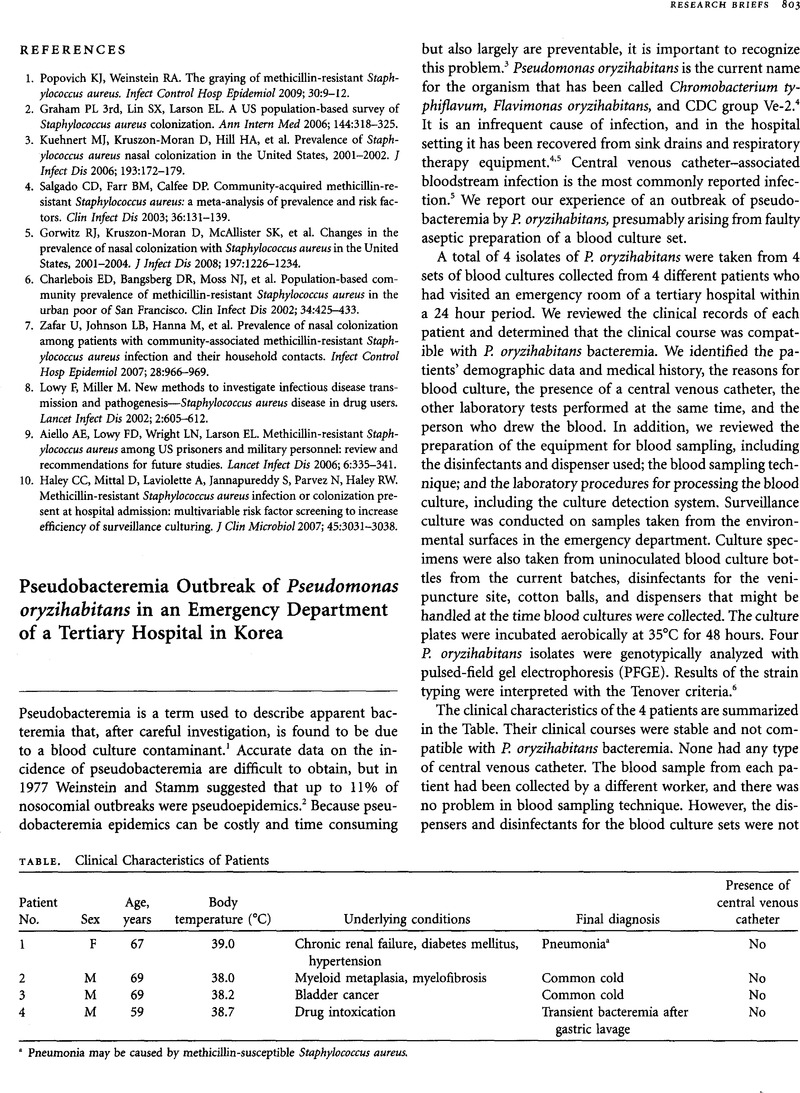Crossref Citations
This article has been cited by the following publications. This list is generated based on data provided by Crossref.
Woo, Kwang-Sook
Choi, Jae-Lim
Kim, Bo-Ram
Kim, Ji-Eun
Kim, Kyeong-Hee
Kim, Jeong-Man
and
Han, Jin-Yeong
2014.
Outbreak ofPseudomonas OryzihabitansPseudobacteremia Related to Contaminated Equipment in an Emergency Room of a Tertiary Hospital in Korea.
Infection & Chemotherapy,
Vol. 46,
Issue. 1,
p.
42.
Nei, Takahito
Sonobe, Kazunari
Onodera, Asaka
Itabashi, Toshikazu
Yamaguchi, Hiroki
Maeda, Miho
and
Saito, Ryoichi
2015.
Two cases with bacteremia suspected to be due to relatively rare Pseudomonas (Flavimonas) oryzihabitans.
Journal of Infection and Chemotherapy,
Vol. 21,
Issue. 10,
p.
751.
Keikha, Masoud
Soori, Tahereh
Azadi, Davood
Karami‐Zarandi, Morteza
Daneshpazhooh, Maryam
and
Ali Rahdar, Hosssein
2019.
The first report of Pseudomonas oryzihabitansin infection in a patient with hidradenitis suppurativa.
Clinical Case Reports,
Vol. 7,
Issue. 8,
p.
1514.



